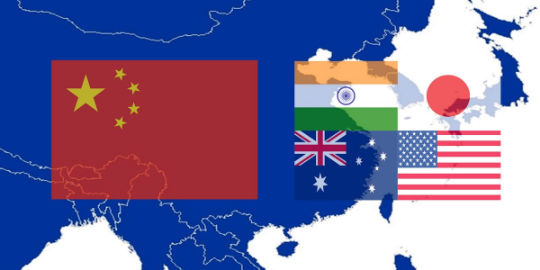Can we bank on the Quad?
Greg Earl | 07 October 2020
Foreign ministers from Australia, the United States, Japan and India met in Tokyo on Tuesday for what was only the second formal ministerial meeting of the Quadrilateral Security Dialogue.
The Quad started in 2007 as a low-profile gathering of officials from the Indo-Pacific’s four largest democracies, but was moribund in less than a year due to the different priorities of its members. It was revived in 2017, as the four countries cast around for ways to respond to China’s increased assertiveness.
The issues on the agenda for Tuesday’s meeting included international supply-chain resilience, quality infrastructure investments and the spread of disinformation in domestic politics. Evidently, the group is tackling challenges that may be more difficult for the region’s older and larger diplomatic institutions to address.
In the latest issue of the AFA journal, Rory Medcalf explores how smaller “minilateral” coalitions, like the Quad, have been emerging in recent years to help balance China’s power in the region. Medcalf describes the Quad as the most prominent example of this trend, noting that its role has been growing and is now “almost certainly here to stay”.
“In the unlikely event that Beijing rediscovers the art of diplomatic adaptation and pulls back on its assertiveness sooner rather than later, the Quad could matter less,” Medcalf writes. “But the strategic anxieties and activist diplomacy of Quad members in 2020 point a different way: to a strengthening of the Quad and an ambitious agenda.”
There are some risks involved in placing too much confidence in the Quad, given the way its members’ interests have deviated in the past.
For example, the United States has pushed for it to become an Indo-Pacific version of NATO, which would likely compete with some existing institutions and probably require a strategic shift from its members towards a more formal containment of China.
In another essay in the latest issue of AFA, Hugh White argues that Australia should not rely on such a development to help secure it against China. Countries in the region, he writes, “want America to stay in Asia to balance China, not to dominate it, and they will calibrate their support accordingly”.
The Quad is a significant part of the region’s emerging diplomatic architecture of minilaterals, both formal and ad hoc, and that’s how it should be seen. It should not be the region’s pre-eminent response to geopolitical uncertainty.
Greg Earl is economic diplomacy columnist for the Lowy Institute's The Interpreter.
This article was originally published on Australian Foreign Affairs.
Views in this article are author’s own and do not necessarily reflect CGS policy.
